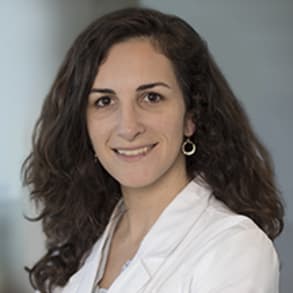Many treatments are available for Parkinson's disease. Dr. Melita Petrossian at Pacific Neuroscience Institute says it is good news that treatments are available that improve patients' quality of life and help them maintain independence for many years.
A New Technology for Parkinson’s Disease Treatment
For many patients with Parkinson’s disease who continue to experience challenging symptoms, a new state-of-the-art technology at Pacific Neuroscience Institute can provide improved quality of life, reduced tremor, reduced dyskinesias and other benefits.
A new deep brain stimulation (DBS) surgically implanted device called Percept™ PC Neurostimulator with BrainSense™ technology detects patient-specific brain signals and provides feedback to optimize therapy for patients with Parkinson’s disease. Benefits include improvements in tremors, rigidity, slowness of movement and overall quality of life.
Our movement disorders neurology and restorative neurosurgery specialists provide DBS expertise and experience. The first in Providence health system to use Percept™ PC with BrainSense™, this breakthrough in monitoring and treatment technology can be considered for patients who need to take their current medications too frequently, or who can no longer tolerate their current treatment regimen. This DBS system is available for new patients as well as for updating to older implanted DBS systems.
Patients at Pacific Neuroscience Institute receive a superior comprehensive and personalized medical treatment approach, and functional DBS neurosurgical treatment when appropriate.
For information about this technology and our restorative neurosurgical deep brain stimulation expertise, please call 310-582-7433 for consultation with movement disorders neurology and restorative neurosurgery team.
Related Presenters

Director, Pacific Movement Disorders Center
Dr. Petrossian’s expertise is in the comprehensive care, treatment, and management of patients with movement disorders including Parkinson’s disease, essential tremor, dystonia, gait disorders, ataxia, myoclonus, tics and Tourette’s syndrome. ...
Related Videos